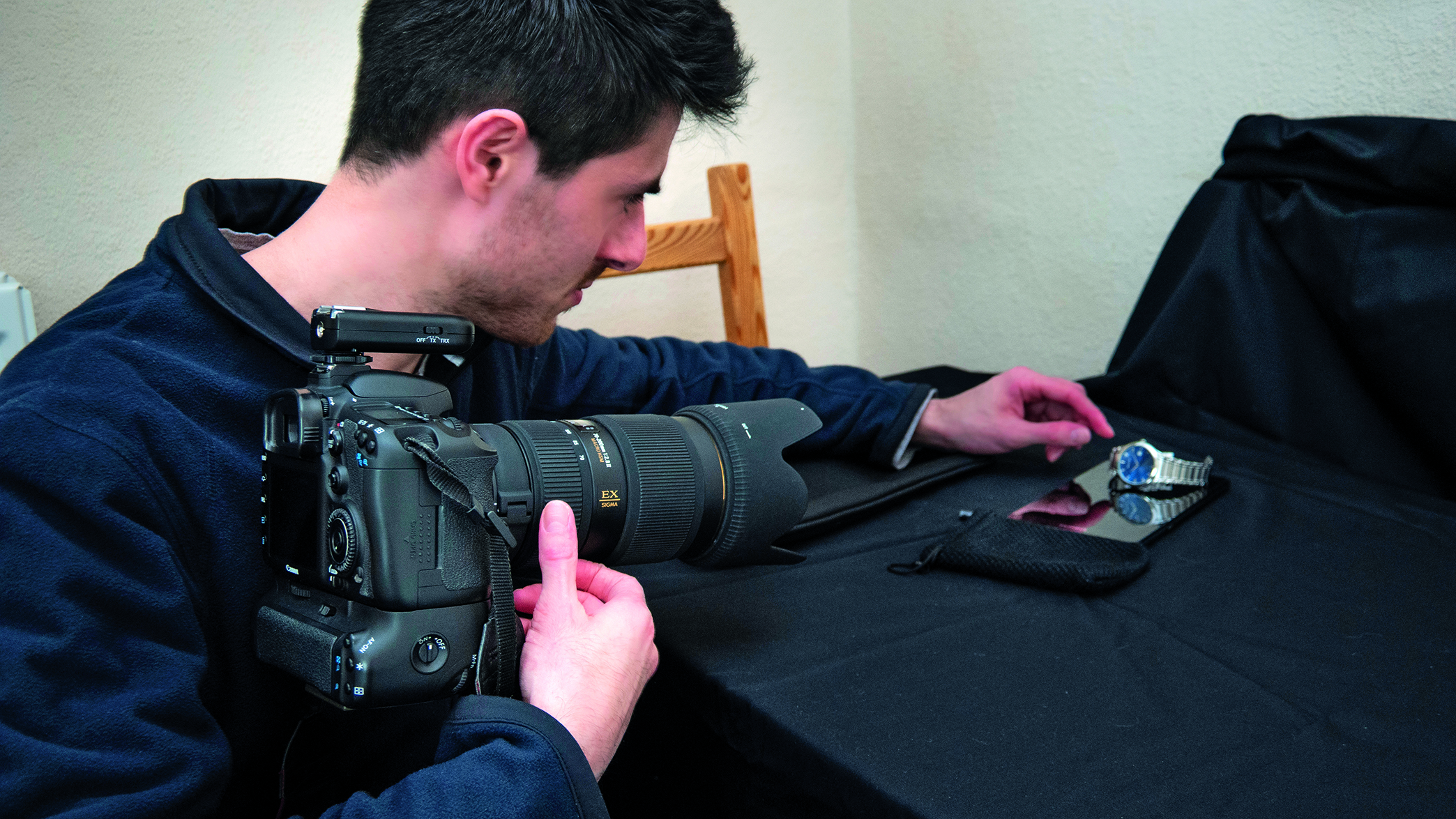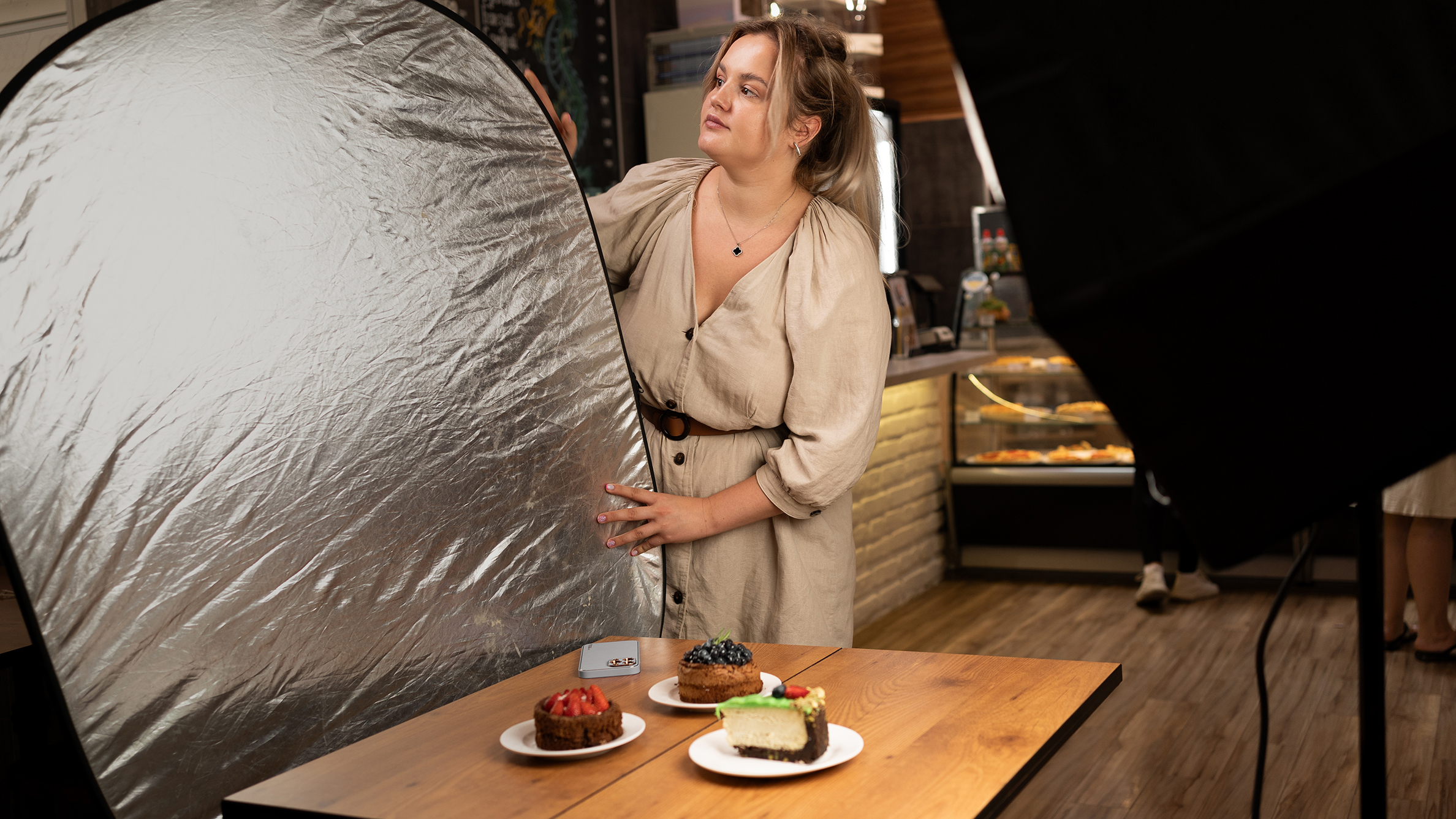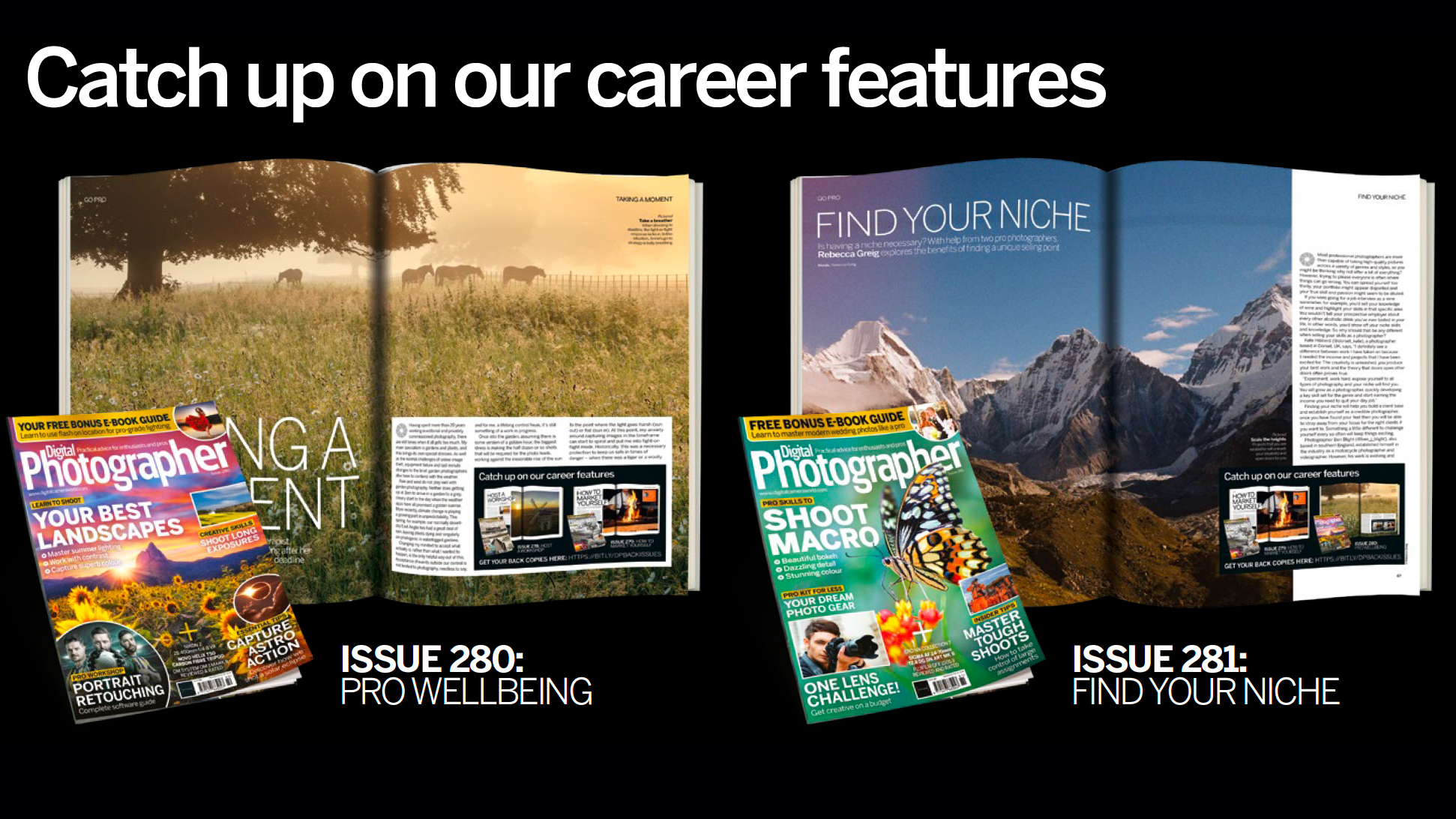
No portfolio, no experience. No experience, no portfolio. It’s a vicious cycle that can feel impossible to break when you take your first steps into the photography industry.
Once you’ve decided you’d like to make a career out of your photography, you will soon realize that you need image examples to attract your first clients. However, many of these prospective first customers will want to see a proven track record of your work before commissioning anything significant from you. So how can you break the cycle and create a pathway for yourself that leads to a job in professional image-making?
Working for free is one method many are drawn to in those formative months, the rationale being that clients will jump at the chance to receive images they didn’t pay for, while you get shots to add to a portfolio. It’s certainly a viable option, but it’s important to be aware that you might not always be met with the enthusiasm you expect. You also need to make sure you target brands that will truly benefit the portfolio you hope to create.
Let’s look at some more precise methods you can put to use today that will not only help bolster your image library but also build meaningful new relationships with a promising client base.
Shoot to a theme

Decide what kind of professional work you’d like to focus on and try to apply a stylistic approach to all the images you shoot. Define your creative style, from subject matter to post-processing workflow and favoured colour grades. These can then be used to align any images you create, personal and professional, in how they look and the character they convey. This is useful as you can effectively back-date your professional experience when you do come face-to-face with potential clients. Even if you haven’t shot exactly what they may hire you for, you can show them more generic images from your personal portfolio that could reflect how you would approach their brand. A landscape or family portrait you took for yourself five years ago could still be used as evidence of your skills today.
Shoot what matters

If you can’t immediately attract clients, be proactive and work out how you can capture some images to get the attention of prospective customers. If you want to shoot products or commercial imagery, collect some products you can shoot at home in your style, working hard to encapsulate the branding of the target manufacturer or retailer. Pick four or five related brands. You can then send these unsolicited images to the appropriate companies to show how you have approached their items creatively and that you understand their brand identity. By shooting what matters to your clients, you work around the lack of an extensive list of former customers because you have shown that you can work with them.
Partition free content

We all have to shoot for free at some point and there is nothing wrong with doing this if it benefits you in the long-term. However, you can put off prospective clients if you undersell yourself at the outset, as this can suggest you aren’t confident in your abilities. Clients aren’t interested in training you as a photographer, they just want great content. This is why it’s best to pitch any free or reduced-rate work as an introductory offer. Be honest about your intentions, explaining that building a specific image portfolio is currently more valuable to you than a full commission fee and that this is a one-time arrangement that could benefit both parties.
Put the client in charge

Cold-calling or walking up to a potential client can be an intimidating prospect and is often met with limited success. A better way to create opportunities for professional introductions is to ask for a favour – request the use of a space to shoot in, ask to borrow some products to photograph or enquire about using products as props. This is a less direct approach that won’t make it feel as though you are canvassing for business. It allows the client to feel in control of your relationship and helps them to understand your intention of building a professional portfolio. Not only can it supply you with images and opportunities for future work but it also illustrates your style and personality.
Make separate portfolios

Early in your career, you might not know exactly what areas you want to focus on, which can make capturing thematic or subject-specific work challenging. If you are in doubt, keep your images generic or, more effectively, maintain discrete portfolios for each type of image.
Set up different social media accounts for portraits and products, for example, or avoid mixing editorial-style shots with narrative wedding photography. These varying genres will often require opposing processing styles and compositions so, once you do get some images to show clients, make sure you are only demonstrating the type of work they want to see.
Catch up on our career features

Digital Photographer magazine has regular features on professional photography and navigating the business side. Get your back issues here.
If you're going to shoot professionally, you might be interested in the best professional cameras – along with the best cameras for wedding photography and the best cameras for portraits.







